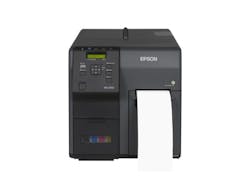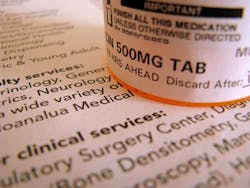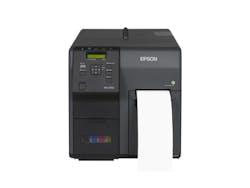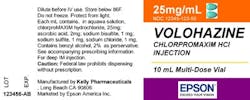Traditionally labeling technologies have been poor performers in this sector, unable to keep up with clinical industry standards. Current technologies are a different story. Shifting to color on-demand labeling can enable the kind of cost-cutting flexibility, accuracy and safety that clinical manufacturers are looking for.
CLINICAL TRIAL LABELING DEVELOPMENTS
Investment in global clinical trials is rising, which may explain why healthcare agencies and government services are cracking down on clinical trial transparency. Globalization – while benefiting the industry on one hand – complicates drug safety and track and trace implementations on the other, as drugs are increasingly imported or exported to and through global supply chains. Checkpoints for any vulnerabilities along global supply chains are thus necessary, to ensure end-user safety. Labeling complexity is a large topic of discussion for manufacturers and pharmaceutical distributors in 2015 – particularly when rigorous efforts are being made to combat drug counterfeiting and supply chain errors that compromise patient safety. The European Union has already responded to the threat of fraudulent drugs by releasing the EU Directive on Falsified Medicines + Delegated Act. The act has led to a global trend of turning to technologies that comply with regulations, build “agility and flexibility into packaging and labeling,” and are capable of both securing and streamlining the supply chain.
Printers like this Epson unit offer advanced technologies to support on-demand, just-in-time delivery of clinical trial labels.
At a national and local level, FDA’s push for new and innovative medications parallels the rise of specialty drug development – marking the increased importance and dependency on clinical trials in the industry. The FDA has paved the way for increased clinical care for therapeutic drugs, while more sponsors are taking on the challenge of new product development in the niche market for specialty, therapeutic or orphan drugs for “rare diseases, breakthrough therapies, and novel new antibiotics.” A quarter of the more than 2,000 products currently in late-stage clinical development are specifically oncology therapies. By 2020, more than half of the industry’s sales will be from biologics, specialty drugs and therapeutic vaccines. Additionally, last year’s Ebola outbreak raised questions about the response time in testing and research, contributing to a larger discussion on global health concerns. The consequences of the outbreak–coupled with increased industry pressure for more organized and timely responses – only further demonstrated the critical need to fast-track clinical trials for rare diseases. Consequently, the specialty market is poised for increased competitiveness in an already fast-paced industry, pushing demand for technologies that can adapt to the rigorous manufacturing standards for new products.In general, companies in 2015 will be on the lookout for partnerships with manufacturers that have established themselves as “high operational efficiency” performers and also, by necessity, expanding packaging and labeling services to include global clinical trial management. Operational efficiency has become an industry expectation, rather than simply a value-add. In order to keep up with the industry’s requirements, color labeling, printed on-demand, has the potential to improve clinical supply chain flow.
SUPPLY CHAIN CHECKPOINTS
For those not aware, drug development and clinical trial testing occur in two stages – a preclinical stage and a clinical stage that consists of four phases. The preclinical and clinical stages last approximately 9 years, consisting of research, development, testing and finalization. Regulators however, consider each clinical phase as if it were a separate, distinct trial, which means that the FDA must approve all data before the trial moves on to the next phase. This approval-by-trial phase process also impacts updates or changes to drug labels, which increase in frequency as the participants for drug testing grow larger with each incremental phase. A final labeling review takes place once a drug undergoes the New Drug Application process.
Within the trial itself, there are quite a few checkpoints during which a significant amount of time is devoted to crosschecking the accuracy of recorded updates or label changes. Clinical trials by nature often require smaller batch sizes that manufacturers maintain rigorous control over. Each batch comes along with specified preproduction and postproduction batch records that outline necessary guidelines to carefully track any label changes that occur. Maintaining supply chain precision for checkpoints such as these, that leave room for human error, requires durable labels that enhance quality control by withstanding wear and tear and ensuring readability of unique identifiers.
Like commercially available approved drugs, clinical trial drug supplies must carry clear, compliant labeling ready for consumers and trial administrators.
Labeling technology that can also update variable information, last-minute changes or distinguishing markers, are necessary to the clinical supply chain. For instance, labels play a prominent role in minimizing bias when it comes to endpoint assessment of certain clinical treatments. Trials can either be open-label trials, where doctors and patients are aware of the treatments, or they can be blind or double-blind trials in which either the participant or both the participants and doctors administering the medication are unaware of the treatment that they are receiving, in order to eliminate bias. In blind trials however, labels must mimic the label of the active drug while maintaining a distinct marker for the company conducting the study to be able to distinguish.With an increasingly globalized clinical trial landscape, manufacturers are increasingly handling drug label updates for simultaneous trials held in different countries. Updates to meticulous details of study and subject participants, as well as whether the trial is open or blind, must be accurately syndicated according to national and global regulatory standards, and translated in the appropriate language(s) of the countries where manufacturing and end-product distribution will occur. Multi-language labels that are not consistent with the regional requirements of a country can cause severe delays in an already complicated label approval process. Issues of quality, compliance, and safety that are addressed at the ground-level of the supply chain will provide the necessary foundation and push for smoother production among all subsequent steps in drug development.
In light of the recent growth and heavy investment in clinical trials, the ability to accurately and efficiently reflect even the smallest label changes takes priority. With flexible and responsive color on-demand labeling technologies, manufacturers can minimize approval timelines and enhance supply chain flow while adhering to specific protocol.
Flexibility & Responsivity: Label updates can occur during or between the four rigorous trial phases, on top of any last-minute changes either before or after regulatory review. Even the slightest changes in dosage, warning, expiration, packaging and/or patient or study information (e.g., updated site location), must be reflected in the labeling in order to maintain transparency between the manufacturers and personnel involved in the trial.
In a climate where all complex and frequent changes must be FDA-approved, manufacturers require accurate and efficient labeling with quicker turnaround time. Color on-demand labeling allows manufacturers to directly address any supply chain delays on their end that can be taken care of –smoothing over potential bumps in the production process ahead of time.
Immediate response and flexibility to frequent, often variable changes in data can also significantly reduce lead time. Time is a critical factor when it comes to clinical trials, which is why maintaining trial continuity is a high-priority for manufacturers. Flexible, on-demand labeling technology simplifies the clinical label and print process without compromising labeling accuracy. Rather than relying on pre-print labels or contract printers – which can drive up costs –clinical manufacturers can print quality labels in-house immediately following any regulatory approvals or label updates, or right before a shipment is ready.
On-demand print technology is the practical alternative for manufacturers committed to pre-print stock – taking into consideration the labeling flux that occurs for clinical trials. Color on-demand is thus capable of cutting down on both time and costs accrual; minimizing start-up and maintenance costs, delay-related expenses, and costs associated with frequent overestimation in the amount of pre-print material needed for production. Manufacturers, who adopt on-demand printing technology, are able to define both the time and price when it comes to labeling operations.
Accuracy & Safety: Color on-demand technology significantly reduces overstock as well as the potential risk of product mix-up or human error during manual inspections of labels. Replacing pre-print labels with real-time technology that produces accurate high quality color can support clinical safety. This is particularly relevant to the clinical trial supply chain in that it enables better material management and adherence to GMP by securing supply chain checkpoints that are often exposed to error. In addition there’s less waste throughout the process and can help manage the risk of counterfeiting, which is a growing global threat.
Ultimately, any changes or mishaps that occur due to label overstock or a lack of proper handling of information, expiry, or warnings, can literally mean life or death for a patient. Securing these supply chain checkpoints is of utmost importance – especially during the labeling process for clinical trials where distinct requirements must be met.
Labeling complications in clinical trials will only be further exacerbated as global avenues open up and expand, and more industry players invest their time, money and services in drug development. The label journey along the clinical supply chain includes a number of risky checkpoints that are best combated by high quality labels that streamline the chain and also enable full traceability, visibility and safety – benefiting both the manufacturer as well as the end-user patients.








